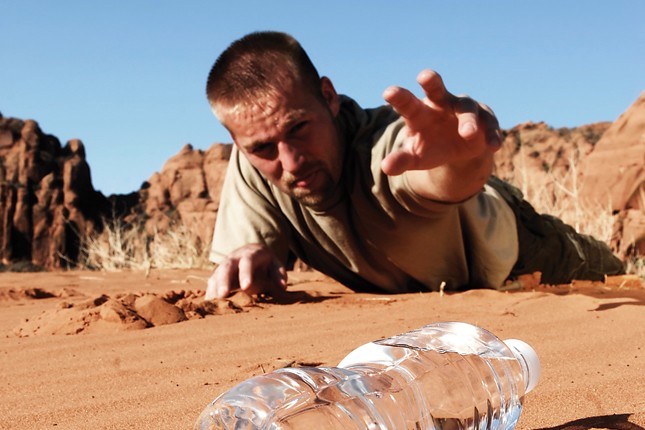Following these simple steps is all that it takes to keep the body hydrated and avoid a wide-range of problems that can turn into life-threatening situations.

Urine Color
One of the easiest ways to identify dehydration is by looking at the color of the urine. Urine will be slightly yellow to clear when the body is optimally hydrated. However, there is no firm agreement on whether clear urine is better than yellow. Clear urine indicates that you have enough, if not too much water in the body. Urine that is slightly yellow indicates that the body has just enough water. These sound similar, but there is a difference between having just enough and enough.
Urine will darken as the body dehydrates. The volume and frequency of urination will also decrease. Once urine starts to appear thick or have a darker yellow appearance, then you need to start taking in more fluids. Once urine falls into the range of light to dark brown, the body is already significantly dehydrated. Once the volume during urination diminishes to a small amount, and the urine is dark, the body is seriously dehydrated.
The trick is to find the right balance of water intake under the conditions that the body is facing. You don’t want to drink too much and waste water. On the other hand, it is essential that you drink enough to keep the juices flowing.

Body Processes
Keep in mind that the body processes a limited amount of water at a time. The general consensus is that this amount ranges from about 12-16 ounces per hour. Someone who is seriously dehydrated can not simply drink a gallon of water at one sitting and replenish levels in the body. This is why people who are dehydrated and rescued spend time in the hospital with an IV slowly infusing fluids into the body. The process of reversing dehydration takes time, and this is one reason why it is so important to prevent it from happening in the first place by drinking through out the day.
Imagine that your body is like a nuclear power plant. It generates energy through heat, and it needs water to keep things cool in order to avoid a meltdown. As the body becomes dehydrated, its temperature will rise, the heart will beat faster and the movement of water through the system will slow down. This prevents waste products and toxins from being washed out of cells and through internal organs. These poisons accumulate and can lead to things like stiff joints, fatigue, mental fogginess and alterations to levels of consciousness.
Initially, someone who is dehydrated may show signs of clamminess or sweating. This is the body’s way of removing heat from inside and using water to cool the skin. However, advanced stages of dehydration will lead to dry skin, fever and facial redness. Muscles will stop receiving water as resources are dedicated to protecting the organs and brain. Kidneys can become damaged, and heart rates along with respiration will slow dramatically.
Ultimately, someone who is extremely dehydrated may lose consciousness, have seizures, lose their mind or have a heart attack. They may become a threat to themselves or others, and this can turn a medical emergency into a much bigger threat.
Prevention
The only way to avoid becoming dehydrated is to drink plenty of liquids, preferably water. It is also important to anticipate fluid loss and drink accordingly ahead of time. You should also plan ahead to ensure that you have access to enough water to meet demand as well. Nothing is more critical to clear thinking and maintaining health and strength during a crisis than proper hydration. Make sure that you keep an eye on yourself and others in order to identify signs of dehydration in its earliest stages.
In addition to increasing fluid intake, you can also take practical steps to reduce exertion and stress on the body. This will help the body to retain more fluids. Limit exertion in the heat of the day, minimize exposure to the sun and try to rest in a cool, breezy and shady location.
